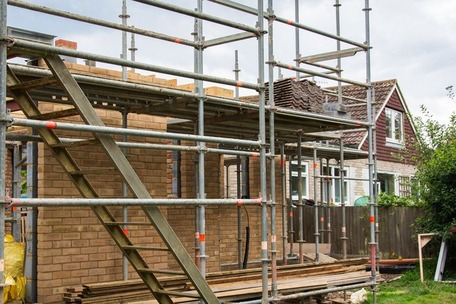
As the government continues to squeeze landlords and force many out of the market, it is becoming increasingly evident that landlords seeking to generate sufficient returns need to find ways of adding value. Such value can come from less tangible actions, such as an understanding of the market, knowledge of infrastructure spending or tasteful décor, and furnishings of buy-to-lets and short-term rentals.
Equally, many landlords seek to add value through the more traditional bricks and mortar route. Unfortunately, by doing so, it is possible to run afoul of local planning departments and be caught in the long and expensive pursuit of seeking approval on planning permission. This is where it can be beneficial for landlords to have a good understanding of permitted development rights and what options they can afford an astute property investor.
What Is Permitted Development?
In certain permitted situations, landlords and homeowners in the United Kingdom can carry out specific property improvements without the need to apply for planning permission. Such works fall under the scope of ‘permitted development rights’. That is, an overall planning permission granted by the government, which supersedes the need to apply through your local authority planning department.
The benefit of permitted developments is that they provide landlords with the opportunity to find and purchase properties with reasonable confidence that they can carry out specific value-adding works. When viewing a property and assessing its potential, landlords can benefit from the security of knowing that, in all likelihood, it is possible to carry out a 3 metre or 4 metre rear extension or undertake a loft conversion.
Types of Permitted Development
Many different works fall under permitted development, ranging from changing a property’s windows through to larger two-story extensions. However, the caveat with permitted development is that it does not provide a blanket approval for extensions, additions, or amendments to a property. Rather, it negates the need for planning approval so long as any work meets a stringent set of pre-established criteria.
Types of permitted development include:
- Single story rear extensions
- Double story rear extensions
- Building a porch
- Loft conversions
- Garage conversions
- Basement conversions
- Internal amendments such as knocking down internal walls
- Installing solar panels
- Adding roof lights or dormer windows
Notable exclusions to permitted development rights include:
- The addition of balconies
- Verandas
- Extensions to the front of a property
- Raising the height of the property roof
Although the above includes many of the more common types of permitted development that may be carried out by landlords, the list itself is not exhaustive and there are other more niche areas of permitted development that have not been mentioned.
Properties Which Are Exempt From Permitted Development
Not all properties fall under the remit of permitted development, so it is important to understand where permitted development is not applicable. Firstly, permitted development becomes redundant in cases where the property is a listed building. Secondly, flats and maisonettes are excluded from permitted development rights due to the obvious impact any amendments or extensions could have on neighbouring properties. Thirdly, properties located within conservation areas, areas of outstanding national beauty, national parks, and designated areas can face additional restrictions and criteria which limit the scope of permitted development.
Meeting the Criteria Of Permitted Development
Permitted development is given so long as the work meets the guidelines set out by the government.
Permitted Single Story Extensions
Single story extensions can be completed without needing planning approval from a local authority so long as they fall within certain criteria:
- Rear extensions can protrude 3 metres in the case of semi-detached or terraced properties. Rear extensions on detached properties can protrude as much as 4 metres.
- The extension must reflect the existing materials of the property. If a dwelling has been built using render, pebble, or red brick for example, the extension must be consistent with this and be clad in a similar material.
- Extensions on the front or side of a property that face a public road do not fall under permitted development.
- Extensions must not exceed 50% of the land surrounding the existing property. It is important to determine if there have been any prior extensions, which will need to be included in the total as well.
- Extensions on the side of a property may only have a single story, up to 3 metres in height, and cannot extend beyond 50% of the width of the original dwelling.
- If the extension is within 2 metres of a plot boundary, the eaves must not exceed 3 metres.
- In the case of bungalows, the ridge or eaves height of an extension must not be higher than the original dwelling.
Permitted Two Story Extensions
Although one of the more expensive options, two story extensions provide landlords and property investors with the opportunity to completely reimagine the layout and characteristics of a house. Simple ‘two-up and two-down’ semi-detached houses can become larger 3 bedroom family homes with an open plan kitchen. Such extensions can generate significant returns in sought after locations. That being said, they also come with an additional suite of restrictions and criteria if they are to meet the requirements of permitted development:
- As is the case with single story extensions, two story extensions must match the materials and characteristics of the original property.
- Two story extensions must not exceed the height of the existing house eaves.
- Two story extensions cannot be built within 2 metres of the plot boundary.
- The maximum length of two story extensions is 3 metres for semi-detached properties and 4 metres for detached properties.
- The width of the extension must be less than 50% of the width of the existing house.
- Balconies and terraces on two story extensions do not fall under permitted development.
Permitted Loft Conversions
Loft conversions are a popular route to adding value to a property. They can be an affordable way of adding an additional bedroom to a property, especially in locations where space is at a premium. In cases where the roof height and internal area of a loft are already sufficient to add an additional bedroom, the case for permitted approval is quite clear. However, there are some specific requirements that must be accounted for when expanding the value or aesthetic of a properties roof/loft:
- Loft conversions do not fall under permitted development when the property is situated on designated land.
- The loft conversion must reflect the existing materials of the property. If a dwelling has been built using render, pebble, or red brick for example, the extension must be consistent with this and be clad in a similar material.
- The loft conversion must not be higher than the highest part of the original roof.
- Additional roof space created as part of a loft conversion must not exceed 40m340m3 on terraced/semi-detached properties or 50m350m3 on detached properties.
- Extensions, such as dormer windows, which extend beyond the existing roof plane are not permitted at the front of a property.
- Roof extensions should be set back a minimum of 20cm from the eaves of the original building.
Permitted Porches
Porches can be a valuable addition to many properties. Homeowners and tenants appreciate the additional security, improved aesthetics, and weather protection that they can offer. Whether, pound for pound, they add enough value to warrant being added to a property by a landlord will depend on the property location and previous characteristics. However, in terms of permitted development, porches can be relatively straightforward additions, so long as they meet the following criteria:
- The total area of the porch must have an external footprint that does not exceed 3m23m2.
- No part of the porch may rise higher than 3 metres from the existing ground level.
- The porch may not be within 2 metres of a public highway or pedestrian path.
Permitted Outbuildings
During the pandemic, the demand for outbuildings shot through the roof. Tenants and homeowners placed an added value on having an additional space to use as a home office, gym, or recreational area. Whilst demand for such buildings has waned slightly as time has progressed, they still remain a popular and valuable addition to a property, especially given the extensive choice of pre-fabricated affordable buildings online. That being said, landlords should be conscious that such outbuildings must meet the following criteria to fall under permitted development rights:
- Similar to extensions, outbuildings may not use more than 50% of the land surrounding a dwelling.
- The outbuilding may not be constructed on land situated to the front of the original dwelling.
- The eaves on an outbuilding must not exceed 2.5 metres in height, with a maximum height of 4 metres for dual-pitched roofs.
- If an outbuilding is within 2 metres of a plot boundary, its maximum height may not exceed 2.5 metres.
Permitted Wraparound Extensions
Wraparound extensions are when an extension protrudes on multiple sides of the original property. For example, a 3 metre extension on the side of a property and also on the rear of the same property. Unfortunately, such extensions are unlikely to fall under permitted development rights, as each extension is judged against the permitted development criteria of both types of extension. For example, a side extension is only permitted in cases where it is less than 50% of the width of the original building. However, combining both a side extension and rear extension will very likely exceed this width and thus be ineligible for permitted development. What is more, the structural cost of undertaking such an extension, given the restrictive requirements needed for it to meet permitted development rights, would likely make the work uneconomical for landlords and property investors.
Permitted Garage Conversions
A sizable proportion of garages in the UK end up being unused or filled with unwanted clutter and waste, making them a prime candidate for conversion. Some estimates suggest that converting a garage into an additional ensuite bedroom can add as much as 20% onto the value of a property. Comparatively, creating space for an additional home office or living room can add up to 10%. Although, wise landlords and property investors would be well placed to assess whether there is a decided lack of suitable garages in the local area, in which case retaining the garage may be the more valuable option.
Garage conversions are included under permitted development rights, meaning that you will not need to apply to the council for planning permission. This is the case so long as:
- The works carried out as part of the garage conversion are internal.
- The materials used are in keeping with the rest of the property.
- The conversion does not enlarge the original building.
In situations where the garage is detached from the main property, it may be worth seeking professional consultation, as changing such buildings into a living space or annex may require planning permission in some cases.
Professional Guidance
Whilst, on the face of it, the criteria for permitted development is quite straightforward and understandable, landlords in doubt should always seek professional advice from an experienced architect or consultant. Such professionals will be more aware of the intricacies and idiosyncrasies of permitted development rights and will be able to prevent any costly mistakes.
Even if landlords opt not to seek professional guidance when planning an extension or works to a property, it can be worth running plans by the local authority planning department, if only to get a cursory check that everything is in order.
It should also be noted that permitted development rights were expanded in England in 2020, meaning that there can be variation between what may be deemed permitted development, depending on what nation of the United Kingdom the property resides in.



